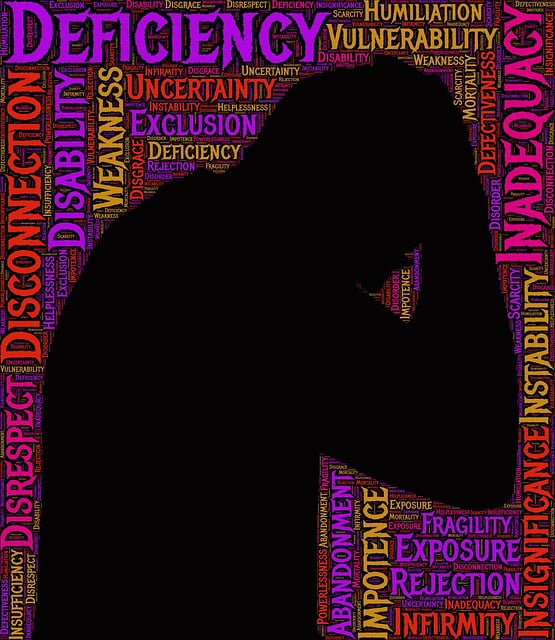Risk assessment is vital for successful harm minimization in healthcare, especially substance abuse therapy settings like Longmont Drug Abuse-Substance Abuse Therapy. By evaluating risks related to relapse, mental health issues, social pressures, and support networks, therapists can develop targeted interventions. Integrating social skills training and resilience-building activities enhances therapy effectiveness. A comprehensive harm minimization plan, including self-awareness exercises and evidence-based techniques, equips individuals with coping mechanisms for long-term recovery. Robust risk management protocols prioritize client safety and well-being in therapy environments, addressing evolving risks through continuous evaluation and tailored interventions.
In the heart of Longmont’s substance abuse therapy landscape, risk assessment and harm minimization planning stand as cornerstones for effective treatment. This comprehensive guide delves into the critical components of these processes, specifically addressing risks associated with substance abuse scenarios. From understanding risk assessment’s foundational role to developing adaptive protocols, therapists and facilities can navigate challenges effectively. By implementing robust strategies, Longmont’s therapy environment becomes safer, fostering better outcomes for those seeking recovery from substance abuse.
- Understanding Risk Assessment: A Cornerstone of Effective Harm Minimization
- Identifying Risks Associated with Substance Abuse Therapy in Longmont Drug Abuse Scenarios
- Developing a Comprehensive Harm Minimization Plan: Strategies for Therapists and Facilities
- Implementing Risk Management Protocols: Ensuring Safety in Treatment Environments
- Continuous Evaluation and Adaptation: Staying Ahead of Risks in Longmont's Substance Abuse Therapy Landscape
Understanding Risk Assessment: A Cornerstone of Effective Harm Minimization

Risk assessment forms the bedrock upon which effective harm minimization strategies are built. It involves meticulously examining potential dangers and their likelihood, allowing for informed decisions to mitigate risks and safeguard well-being. At its core, this process is crucial for preventing adverse outcomes, especially in sectors like healthcare where burnout prevention strategies for providers are paramount. By understanding the risks associated with substance abuse, such as those addressed through Longmont Drug Abuse-Substance Abuse Therapy, professionals can develop targeted interventions to foster mental health awareness and inner strength development.
This proactive approach ensures that harm minimization planning is not merely reactive but proleptically addresses challenges. It empowers healthcare providers to create safer environments, offering guidance tailored to specific needs while promoting holistic well-being. This comprehensive strategy, rooted in rigorous risk assessment, ultimately contributes to the overall resilience of both individuals and communities.
Identifying Risks Associated with Substance Abuse Therapy in Longmont Drug Abuse Scenarios

In Longmont drug abuse scenarios, identifying risks associated with substance abuse therapy is paramount for effective harm minimization planning. One key area to focus on is the potential for relapse, given that many individuals struggling with addiction face complex underlying issues and social pressures after completing formal treatment. Therapists must assess not only the individual’s current drug use but also their access to support networks, coping skills development, and ability to implement learned strategies in real-world settings.
Additionally, the integration of social skills training and empathy building strategies is crucial. These approaches can help individuals navigate challenging situations, resist peer pressure, and foster healthier relationships—all essential components for maintaining sobriety. By addressing these risks proactively, therapists in Longmont can enhance the success rates of substance abuse therapy and support clients in their long-term recovery journeys.
Developing a Comprehensive Harm Minimization Plan: Strategies for Therapists and Facilities

Developing a Comprehensive Harm Minimization Plan is an essential strategy for therapists and facilities specializing in Longmont Drug Abuse-Substance Abuse Therapy. This process involves creating tailored interventions to mitigate risks associated with clients’ mental health and substance use disorders. Therapists should incorporate self-awareness exercises and resilience-building activities into treatment plans, enabling individuals to develop coping mechanisms and make informed decisions.
Effective harm minimization planning requires a multifaceted approach. Facilities should implement robust risk management practices, regularly reviewing and updating policies based on individual client needs. By integrating evidence-based techniques, therapists can support clients in navigating challenges, reducing potential harms, and fostering a sense of safety during the therapeutic journey. This proactive strategy is vital for ensuring positive outcomes in mental health care, especially when addressing complex issues like substance abuse.
Implementing Risk Management Protocols: Ensuring Safety in Treatment Environments

Implementing robust risk management protocols is paramount in creating safe and supportive treatment environments for individuals seeking recovery from substance abuse, such as those in Longmont Drug Abuse-Substance Abuse Therapy centers. These protocols serve as a foundational framework to mitigate potential risks and ensure the well-being of clients. By thoroughly assessing every aspect of therapy sessions and facility operations, practitioners can identify hazards and implement effective strategies to minimize harm.
One key component is fostering inner strength development in patients. Techniques aimed at enhancing emotional well-being promotion can significantly reduce vulnerability to relapsing or exacerbating existing mental health conditions. For example, incorporating anxiety relief practices into treatment plans not only addresses a common co-occurring disorder but also empowers individuals with coping mechanisms to navigate challenging situations. This holistic approach ensures that clients leave therapy not just physically safer, but mentally equipped to maintain their recovery journey.
Continuous Evaluation and Adaptation: Staying Ahead of Risks in Longmont's Substance Abuse Therapy Landscape

In the dynamic landscape of Longmont’s substance abuse therapy services, continuous evaluation and adaptation are paramount to staying ahead of evolving risks. As the demand for mental health support increases, so too do the complexities of addressing drug abuse within the community. This requires a proactive approach where service providers regularly assess not only the immediate needs of clients but also broader societal trends influencing Longmont’s unique demographic. By integrating self-awareness exercises and mental health awareness initiatives, therapists can foster a more nuanced understanding of substance abuse triggers among their patients.
Through ongoing monitoring, therapy centers can identify emerging patterns, such as increased stress levels stemming from economic pressures or social isolation, and develop tailored interventions. Incorporating evidence-based stress reduction methods further enhances these efforts by equipping both clients and practitioners with tools to mitigate risk factors. This adaptive strategy ensures that Longmont’s substance abuse therapy remains responsive, effective, and aligned with the evolving mental health needs of its residents.
In the realm of Longmont drug abuse treatment, understanding risk assessment and implementing harm minimization strategies are paramount. By identifying potential risks associated with substance abuse therapy, therapists and facilities can develop comprehensive plans to ensure patient safety. Continuous evaluation and adaptation are key to staying ahead in this dynamic landscape, ensuring that both therapists and patients in Longmont are equipped to navigate challenges effectively and foster positive outcomes.














